#white vinegar
Explore tagged Tumblr posts
Text

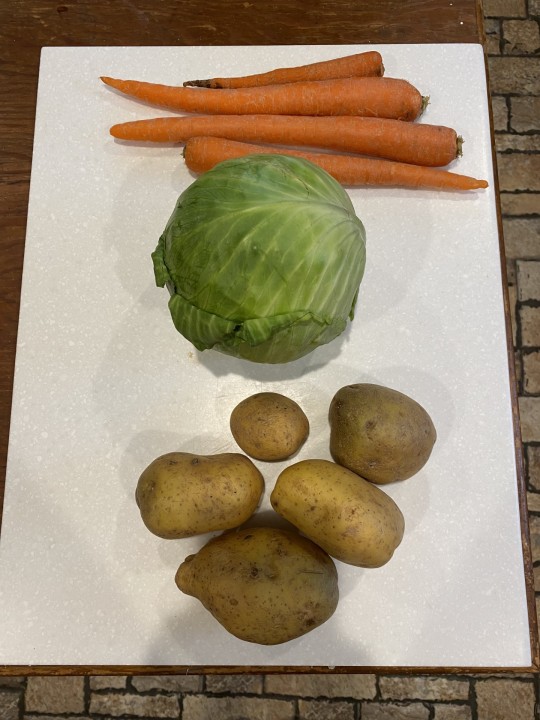
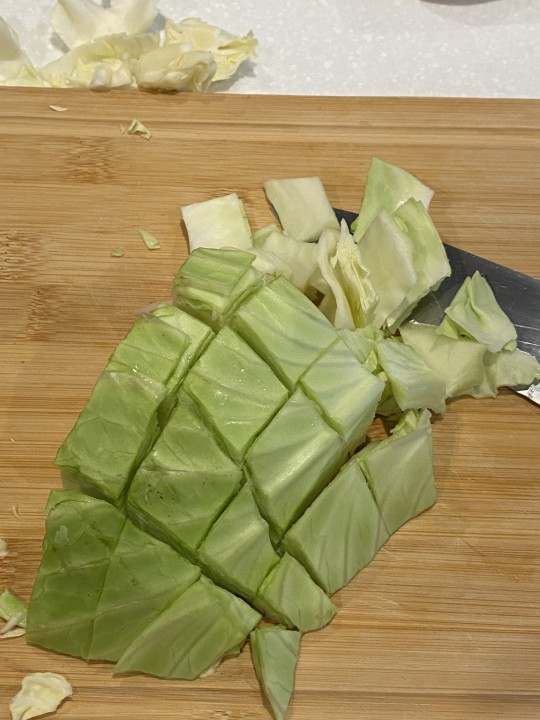








Corn Beef & Cabbage with Potato, Carrots with a Vinegar Mustard Sauce. Using crockpot and Stove top
#maine#fun#fitzy: legion of decency retired#fitzysblogasylum#adventures in maine#food photography#food#homecooking#mainelife#homemade#home cooking#home cook#crock pot#crockpot#crockpotcooking#corn beef#potatoes#carrots#cabbage#mustard#apple cider vinegar#white vinegar#Vinegar mustard sauce#food porn#food fun
6 notes
·
View notes
Text

Swedish Pizza Salad (via Dash for Dinner)
#gluten free#gf food#gluten free foods#dairy free#vegan#egg free#vegetarian#sides#cabbage#white vinegar#red pepper#dashfordinner
7 notes
·
View notes
Text

солёные помидоры (Russian Pickled Tomatoes)
#солёные помидоры#russian food#pickled tomatoes#pickled vegetables#russian pickled tomatoes#vegetarian#ukranian food#tomatoes#dill#dill flowers#cilantro#horseradish leaves#black currant leaves#garlic#peppercorns#bay leaves#carrots#chili peppers#paprika#bell peppers#water#salt#sugar#white vinegar#recipes
5 notes
·
View notes
Photo

Tomato Cucumber Lettuce Salad Recipe
#eato#salad#salad recipe#lettuce salad recipe#lettuce#tomato#cucumber#dill#sesame oil#olive oil#onion#red onion#white onion#salt#garlic#black pepper#white vinegar#vinegar
5 notes
·
View notes
Text



[White vinegar, sugar, celery seed, coriander seed, turmeric, mustard seed, salt. And then pour this hot brine over the celery and the onions.]
#s32e07 crazy chicken twisted burgers#guy fieri#guyfieri#diners drive-ins and dives#white vinegar#coriander seed#mustard seed#hot brine#celery seed#sugar#turmeric#salt#onions
3 notes
·
View notes
Note
When I was younger I used to drink vinegar packets. Just, like, straight white vinegar.
These days, my partner is mildly confused by my habit of adding spoonful of peanut butter to canned chili, and utterly horrified by my peanut butter and roast beef sandwiches.
I know some people do the vinegar thing for health reasons, and peanut butter and chili is just extra protein. The sandwich is too far.
13 notes
·
View notes
Text




Melanie Martinez white
#white rabbit#white#black and white#white vinegar#melanie martinez#melanie littlebodybigheart#crybaby#dolette#dollcore#this is what makes us girls#angelcore#angel#girl blogger
0 notes
Text
Vinegar: Household Cleaner and Health Remedy
Is the power of vinegar an old wives’ tale or a well-known fact? White Vinegar Uses Vinegar is basically (pun intended, although without a chemistry background it might make no sense) acetic acid and as such makes an effective and inexpensive cleaning agent. Being very aware of and sensitive to TOXINS, I do use extra-strength (10%) plain white vinegar for many things. This extra-strength…
0 notes
Text
You likely use a mattress protector to shield your mattress from stains and dirt, but did you know you should occasionally wash the cover? Mattress covers are thin, usually fitted sheets that cover your bare mattress; they are not to be mistaken, with a mattress topper placed on top of your bare mattress to provide extra comfort.
In this article, we’ll demonstrate how to wash mattress coverings by hand or machine. Let’s talk about how to clean the mattress cover. To thoroughly and deeply clean your mattress coverings, follow our step-by-step instructions!
Can a Mattress Protector Be Washed?
Whether a mattress protector is composed of synthetic or natural materials, the answer is that you can wash it. Regular washing will eliminate dead skin cells and mites, which are allergy triggers. Additionally, it will prevent stains and offensive smells from developing, extending the life of your mattress protector.
Cleaning your mattress protector is essential, but different materials require different maintenance procedures to maintain good shape. According to the manufacturer’s care instructions, get the most life and durability out of your protection.
How frequently should the mattress cover be washed?
It appears time-consuming; washing the mattress cover must be more frequently addressed. But maintaining your cover is not as difficult as you imagine. Of course, the ability to remove the mattress cover is the primary necessity. You can feel secure knowing that Swissflex mattresses have washable and replaceable coverings. Typically, a circumferential zip is used to remove the cover.
Even if you use a mattress protector in addition to your bed sheet, washing the mattress cover once a year usually suffices. Your bed sheets should be changed regularly. Since these are not impenetrable, dust and skin particles may eventually find their way inside the mattress cover, which could lead to the proliferation of mites.
It can even be a good idea to launder the mattress cover every three to four months if you suffer from severe allergies. Noteworthy: Clean sparingly, as this can hasten the cover’s deterioration.
Items You’ll Require
To begin, you’ll need a few everyday household items. Mattress coverings can be cleaned in two different ways: by hand or in a washing machine. The cleaning supplies you require for both, though, are usually the same:
laundry detergent (for non-white coverings) or laundry detergent without bleach
Spot-cleaning remedy:
baking soda
white vinegar
machine wash (washing machine)
Big wash basin for hand washing
dryer balls
A Step-by-Step Guide on Cleaning Mattress Protectors
Guide to Machine Washing
First, take the mattress protector off of the mattress.
Take the mattress protector off of the mattress first. While at it, you should dry clean your mattress or put on a new cover. Remove any clips using a flat sheet rather than a fitted sheet.
Step 2: Place the mattress protector in the laundry.
Put the mattress protector and a small amount of mild detergent in the washing machine. Add some borax powder if your mattress cover is white for a laundry boost. If the cover for your mattress is coloured, try adding some baking soda. These will not only deodorise but also provide brightness to your covers. On touch, borax also eliminates dust mites.
Step 3: Start the machine on a gentle cycle.
To avoid tearing or wearing down the fabric, it is recommended to wash your mattress cover on a gentle cycle, regardless of whether it is made of cotton, nylon, or polyester. The mild pressure from the spinning water would clean your mattress protector well without causing any damage unless it is stained.
After one cycle, let the machine run and then drain the water. Rinse the area a few times until the water is clean and no more suds are visible. After thoroughly draining the water, wring away any remaining moisture.
Step 4: Place the mattress protector inside the tumble dryer.
Place the mattress protector in the dryer with a few wool or tennis balls to minimise static and stop shrinking. Instead of using heat, which could also cause the fabric to shrink, tumble dry the cloth until all of the moisture has been removed. Allow to air dry by hanging.
Guidelines for Hand Washing
Step 1: Add soap and water to a basin.
As with a laundry machine, fill a basin with water and soap. Refrain from excessive detergent, which may complicate rinsing the mattress protector afterwards. Add one teaspoon of mild detergent for every gallon of water as a general guideline.
Step 2: Insert the Mattress Guard into the Washbasin
Please take off the mattress protector and put it into the basin. After allowing the fabric to absorb the soapy water, let it soak in the water for ten minutes. You can set up the drying area and hang the cover in the interim.
Step 3: Extract the Dirt Gently
To release the dirt, gently press down on the mattress protector a few times. After emptying the water, rinse the lid with fresh, clean water. To thoroughly rinse away the mattress cover, keep applying pressure and adding more water until no more suds remain.
Use a mixture of vinegar and baking soda to erase stains. Directly apply to the areas that are soiled, then allow to dry. After washing the fabric, remove any remaining paste. Do this before cleaning the mattress protector to stop the stain from setting.
Step 4: Dry and Wring Out Extra Moisture
After removing as much moisture as possible, hang the mattress protector to dry in a warm location. Select an area with plenty of sunlight and airflow to ensure the mattress cover dries fast.
Washing your mattress protector once every two months is an excellent general rule. Nonetheless, there are some circumstances in which this cleaning frequency might be raised, including the following:
Regardless of when it was last washed, clean your mattress protector if you’ve recently recovered from a sickness as soon as possible. As you heal, this will facilitate easier breathing and help eliminate any leftover extra bacteria.
To stop the spill from seeping into the fabric, you should immediately clean your mattress protector if you recently spilt anything. A set stain can harm the fabric of the mattress protector and is more difficult to remove.
Cleaning the fabric of your mattress protector should be done every two weeks if you experience allergic reactions such as runny nose or sneezing. This prevents allergens from accumulating in the fabric and causing allergic reactions in those who are sensitive to them.
Last Words:
A straightforward but crucial first step in creating a healthy sleeping environment is cleaning your mattress cover. You may prolong its life and keep your mattress fresh and safe for many years by washing it frequently, pre-treating stains, and adhering to the care instructions. In addition to shielding your mattress from allergies and spills, a clean mattress cover also improves the quality of your sleep.
#mattress protector#wash mattress cover#clean mattress covering#mattress cleaning instructions#allergy triggers#extend mattress protector life#mattress care instructions#washing frequency#hand washing#machine washing#laundry detergent#baking soda#white vinegar#cleaning supplies#spot-cleaning#drying mattress protector#washing guide#gentle cycle#air dry#remove stains#health benefits#sleeping environment#prolong mattress life#improve sleep quality
0 notes
Text













3 Bean Chili Crunch with Buttermilk Biscuits. Topped with shredded Sharp Cheddar cheese and crushed Chili flavored Chili chips
#Chili#3 bean crunch#chili Fritos#buttermilk biscuits#maine#fun#fitzy: legion of decency retired#fitzysblogasylum#adventures in maine#homemade#mainelife#homecooking#food photography#food#home cook#cooking#home cooking#crock pot#crock pot recipes#crockpot#crockpotcooking#red kidney beans#pork and beans#chili beans#pinto beans with chili sauce#mustard#ketchup#brown sugar#white vinegar#onions
1 note
·
View note
Text

Colombian Pineapple Sauce (via Damn Spicy)
#gluten free#gf food#gluten free foods#dairy free#vegan#nut free#egg free#vegetarian#sauces#condiments#pineapple#cinnamon#white vinegar#damnspicy
11 notes
·
View notes
Text

Quick Pickled Spring Onions
#pickled vegetables#pickled spring onions#quick pickle#vegetarian#vegan#gluten free#rice vinegar#champagne vinegar#white vinegar#pickling vinegar#water#cane sugar#turbinado sugar#sea salt#green onions#spring onions#peppercorns#mustard seeds#dill seeds#coriander#garlic#recipes
6 notes
·
View notes
Text
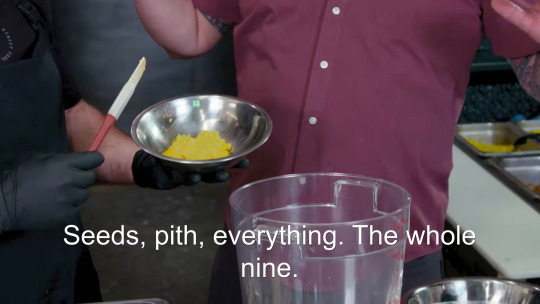
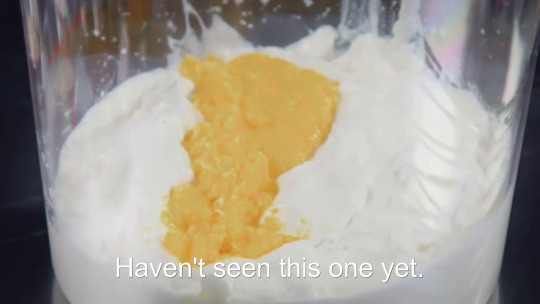


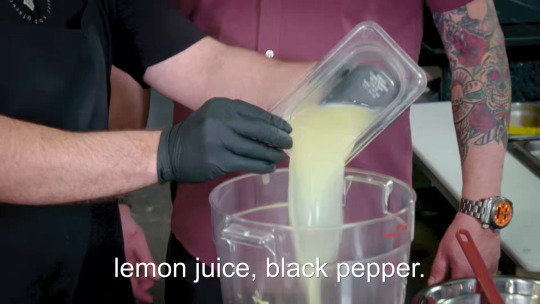
[Seeds, pith, everything. The whole nine. Haven't seen this one yet. Customer repeated pensively, soybean oil, white vinegar, lemon juice, black pepper.]
#s37e12 global greats#guy fieri#guyfieri#diners drive-ins and dives#soybean oil#white vinegar#lemon juice#black pepper#seeds#pith#everything#one#customer
2 notes
·
View notes
Text
Discover the authentic taste of Italy with our premium white vinegar. Perfect for salads, marinades, and pickling, this versatile condiment adds a delightful tang to any dish. Buy now at Tita Italia!
0 notes
Text
0 notes
Text
Chicken Recipe - Sweet and Sour Fried Chicken with Chili Peppers

This sweet and sour fried chicken with chilli peppers is a tasty and simple dinner that the entire family will enjoy. The chicken strips are coated in a flavorful flour and spice mixture before being fried until crispy and golden brown. The sauce is made with white vinegar, ketchup, brown sugar, soy sauce, and chilli flakes, which results in a perfect balance of sweet and sour flavors with a spicy kick from the chilli peppers.
0 notes